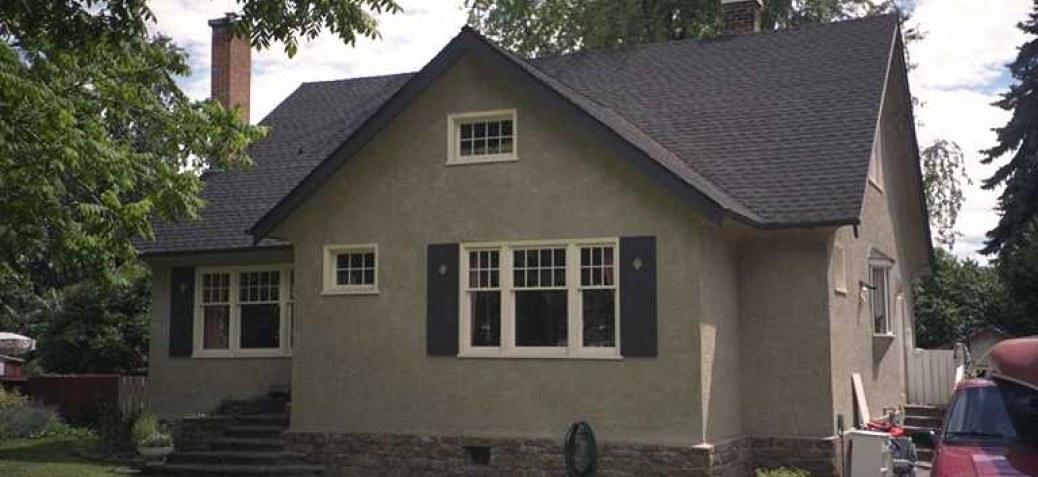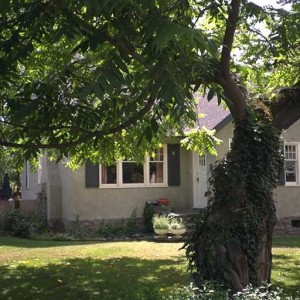Lewis House
Place Description
The Lewis House is a north-facing one and one-half storey wood-frame cottage style residence identifiable for its smooth stuccoed wall treatment and stone clad foundation. The house is located on a residential street south of the downtown core, in Kelowna's historic Abbott Street neighbourhood amidst houses of a similar style, scale and age.
Heritage Value
Built in 1932, the Lewis House is valued for its picturesque, cottage style architecture, which incorporates modern details. This interesting employment of opposing styles illustrates the reluctance during the interwar period to relinquish historical references in domestic architecture, yet displays an appreciation of the simplicity of the Modern movement. Constructed during the austere years of the early Depression, this residence was also a practical reflection of the economic realities of the time.
Furthermore, the Lewis House is significant as a demonstration of the resurgent economic activity of Kelowna during the 1930s when other parts of the province languished but fruit production was the driving economic engine of the Okanagan. The house was built during Kelowna's second phase of residential expansion, and reflects the city's development as the population and economic base increased. The house was built for Valentine Dockrill Lewis (1902-1933) a Kelowna merchant, and his wife Beatrice Marion, whom he had married in 1926. After Valentine Lewis's sudden death, Beatrice lived on in the house for a number of years.
Character Defining Elements
Key elements that define the heritage character of the Lewis House include its:
- mid-block location, with north facing orientation;
- residential form, scale and massing expressed by its one and one-half storey height and compound, rectangular plan;
- side gabled roof with front gabled projection;
- concrete foundation and wood-frame construction;
- picturesque, cottage style details such as its rubble-stone clad foundation and front entrance steps; multi-paned windows; battened shutters with diamond cut motif; window boxes; and original 8-pane wooden front door;
- Modern movement influences such as the smooth, austere stuccoed exterior walls incorporating stuccoed, coved eaves;
- two red brick chimneys (one internal and one external); and
- asymmetrical fenestration with single, double and triple-assembly, double-hung wooden-sash windows with multi-paned upper sashes and multi-paned attic and piano windows.





